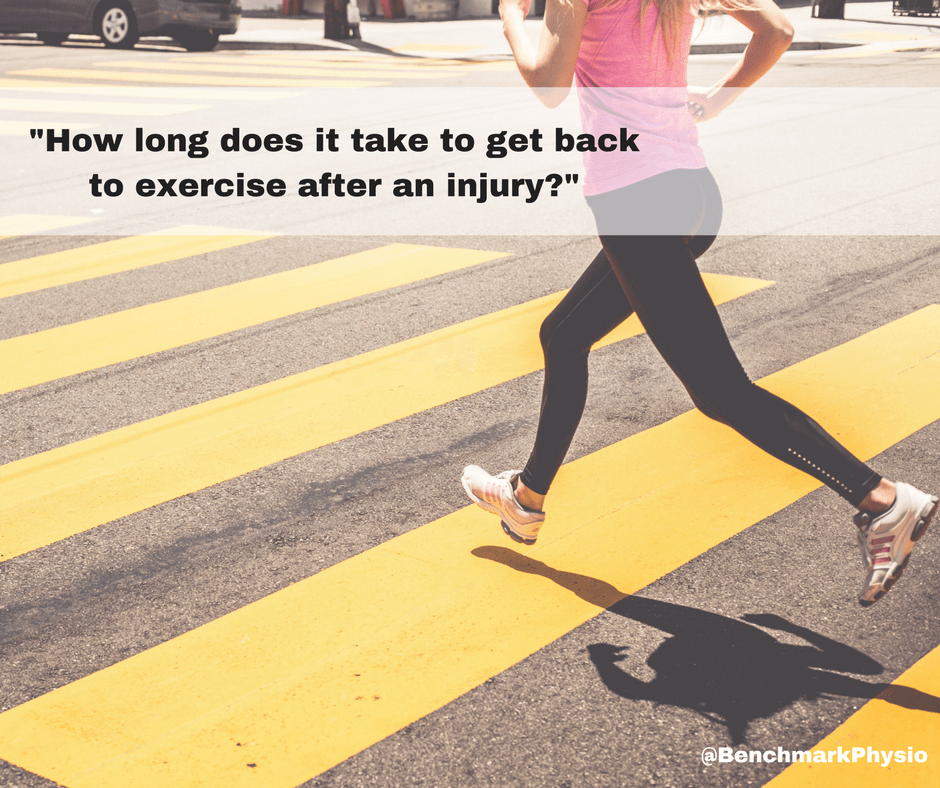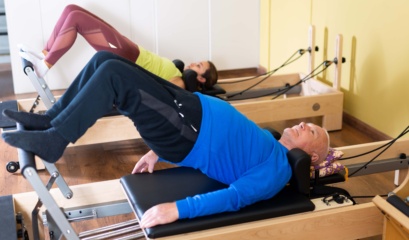Someone called our Beverly Hills clinic a few days ago and asked:
“How long does it take to get back to exercise after an injury?
I hurt my ankle a month ago and I want to know how long it will take me to get back to running.
It’s frustrating not knowing if it’s safe to get back out for a run…”
Firstly, I get the frustration.
When something like ankle pain strikes, or an injury hits you out of the blue, not being able to exercise like you used to and not knowing when it’s safe to get back into it is annoying.
And I know you’re itching to get back into it, but put the brakes on a minute – injuries are no joke.
They are your body’s way of sounding an alarm telling you that something’s not right, so we shouldn’t start back full steam ahead right away.
Instead, making an intelligent comeback to running, or any form of exercise, after taking time off due to injury requires a gradual approach.
And although you’re dying to get back to normal and waiting is frustrating, ask yourself this:
Would you rather make slow, pain-free progress towards building a healthy running, or exercise, base so you don’t risk another injury?
During recovery it’s important to listen to how your body feels.
You can trust it.
It will tell you when it’s ready to get back to doing certain things and when you’ve done too much.
Other factors that will have a significant impact on your return to exercise include things like your age, how long you’ve been suffering from your injury, and what you do to get back to physical activity safely.
With that, here’s 6 steps you can take to get back to exercise safely after an injury:
1. Take It Slow
It’s easy to want to go back to exactly what you were doing before an injury put you out, but not so quick!
If you go back to running how you did before right away, or if you go back to the gym and exert all your energy, you run the risk of making yourself weaker which means a higher risk of another injury!
Not good.
Add to that your body has likely been out of exercise for a couple of weeks or more, it could be a little weaker.
Take it slow and go back into it gradually.
If you feel pain – stop.
2. Begin With Walking
It’s the most natural type of movement for the body, and if you’re injured, a gentle walk is one of the best ways to keep active.
Swimming is also a great form of gentle exercise.
See how your body feels and gradually increase your time spent doing it.
3. Remember, Pain is Pain
While some people live by the motto “no pain, no gain”, when it comes to an injury nothing could be further from the truth.
Pain is the body’s signal that you’ve gone too far or done too much.
Rest and recovery are just as important as re-introducing exercise.
Give your body time to recover so you can return to it safely.
4. Work On Your Balance
This might not be the first thing you think of, but doing exercises to improve your balance in turn will improve your posture…
And strengthen your core – which is essential to exercise safely.
Without a strong core, you run the risk of injuring yourself quick.
5. Eat Well And Keep Hydrated
Eating well and keeping yourself hydrated are key to recovery.
Food plays a big part in the body’s healing process and helps to make your joints strong again.
Stay away from alcohol and junk foods during this time.
Eating whole, natural foods, and drinking plenty of fluids will help speed up the process.
6. Consider Getting Help From A Hands-On Physio
A hand-on therapist can provide you with a step-by-step programme tailored specifically to you and your needs, to help get you back to the exercise you enjoyed in the quickest and safest way possible.
A Physio will be able to assess when you’re ready to get back to it as normal, and will help make sure the injury doesn’t re-occur.
When it comes to your health, fitness and lifestyle, it’s important to listen to expert advice…
That way you can be sure to get back to running and activities much quicker and safer like you deserve.









